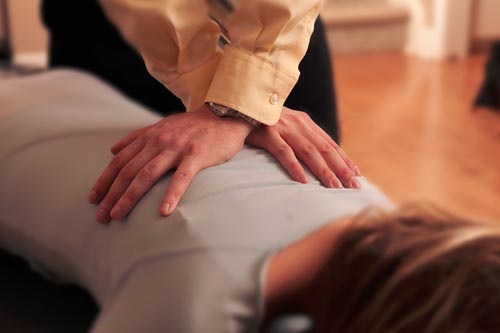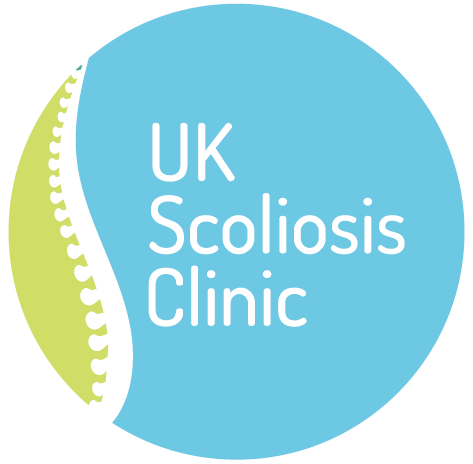Explore Treatments
Learn More
Chiropractic

Since many people recognise Chiropractors as the first port of call for spinal issues there has been much speculation about the ability of Chiropractic care to treat scoliosis. There have been some short-term studies which have shown that Chiropractic can be effective in reducing cobb angle, however more research is required before any long term prognosis can be given.
What is Chiropractic?
Chiropractors are spinal specialists who are trained in spinal manipulation techniques. Chiropractors commonly provide spinal adjustment as an effective form of treatment for back pain and postural issues. Some studies have shown that Chiropractic care can reduce smaller cobb angles to as much as 0 degrees in the short term[1], although larger studies over the longer term will be required to establish whether Chiropractic could be considered a long-term treatment.
Our analysis
There is no doubt that some short-term studies have shown impressive results with scoliosis patients – especially those with smaller curves. That being said, there is a lack of research into the long-term outlook for Chiropractic treatment – most studies have not considered the period beyond treatment exceeding 8 weeks. At the same time, the studies which do currently exist have been small scale, so that larger scale projects are now required to draw further conclusion. Additionally, studies which report their results in line with the SOSORT outcome criteria (against which scoliosis treatments are usually judged) are currently lacking.[2]
While Chiropractic treatment may assist in correcting cobb angle in the immediate term, it is likely that it will eventually be recognised as a complementary treatment to be used alongside bracing or exercise to achieve long term results.
Learn more
-
How does Chiropractic for scoliosis work?
The core of Chiropractic treatment is spinal manipulation Spinal manipulation is a gentle method for realigning the spine. Chiropractic therefore works by manually realigning the spine in a scoliosis patient, just as would be the case in a back-pain patient, for example. Usually, this approach would be coupled with additional treatments, such as exercise, traction or postural work. Chiropractic adjustments are also often complimented with massage.
There are several schools of thought about scoliosis specific treatments within the Chiropractic field, each advocating their own specialist forms of treatment, however at this point in time no one has emerged as an accepted leader.
-
How effective is Chiropractic for Scoliosis?
At this time, evidence appears to suggest that Chiropractic treatment my assist in the management of scoliosis in the short term, while at least one study has shown positive longer-term results. In this 2017 study, using SOSORT criteria, 51.7% of patients achieved curve correction and 38.3% achieved stabilization. In this study the average total correction was 12.75 degrees.[3]
The results are encouraging, but at this time there is not sufficient evidence to suggest that Chiropractic should be considered a standalone long-term solution. Research is progressing in the field, but more targeted studies will be required before formal recommendations can be made.
Excepting the studies cited here, at present the research which has considered Chiropractic has mostly considered it alongside other methodologies[4] which makes a truly objective evaluation difficult.
-
When to choose Chiropractic
Many scoliosis clinics will offer Chiropractic as a complementary treatment and it can certainly have value for treating any pain or discomfort associated with scoliosis. Chiropractic should not be relied on as a primary treatment for scoliosis at this time – but it might be effectively used as part of a broader treatment plan prescribed on an individual basis by a scoliosis practitioner.
-
Research and References
Morningstar MW et al. Chiropractic Rehabilitation for Adolescent Idiopathic Scoliosis: End-of-Growth and Skeletal Maturity Results Clinics and Practice 2017; volume 7:911
References for this page
[1] Sunghak Byun, The effect of chiropractic techniques on the Cobb angle in idiopathic scoliosis arising in adolescence J. . Phys. Ther. Sci. 28: 1106–1110, 2016
[2] Morningstar, Mark W. et al. Topics in Pediatrics: Chiropractic Treatments for Idiopathic Scoliosis: A Narrative Review Based on SOSORT Outcome Criteria J. Journal of Chiropractic Medicine March 2017 16(1):64-71
[3] Morningstar MW et al. Chiropractic Rehabilitation for Adolescent Idiopathic Scoliosis: End-of-Growth and Skeletal Maturity Results Clinics and Practice 2017; volume 7:911
[4] Romano M, Negrini S: Manual therapy as a conservative treatment for adolescent idiopathic scoliosis: a systematic review. Scoliosis, 2008, 3: 2.
Need advice?
Learn more about scoliosis and book a free consultation at the UK Scoliosis Clinic .
Learn More